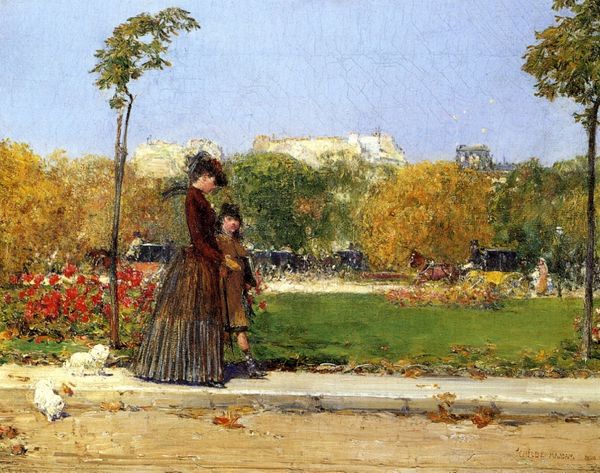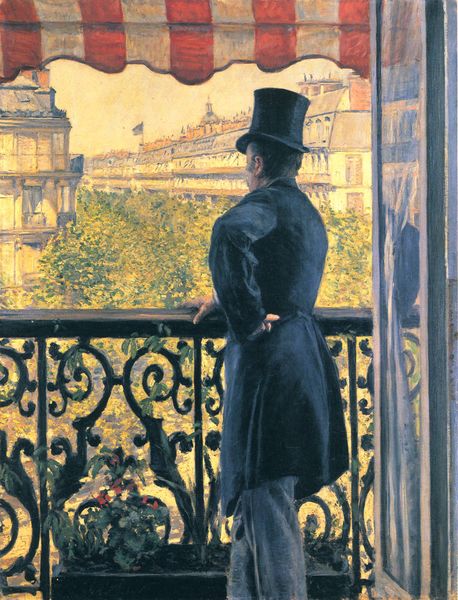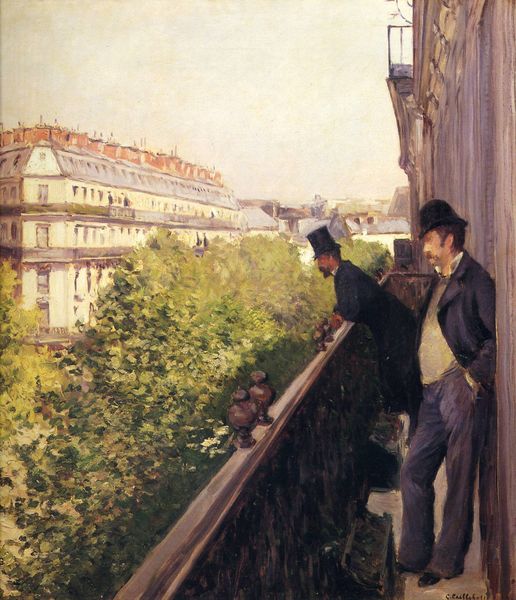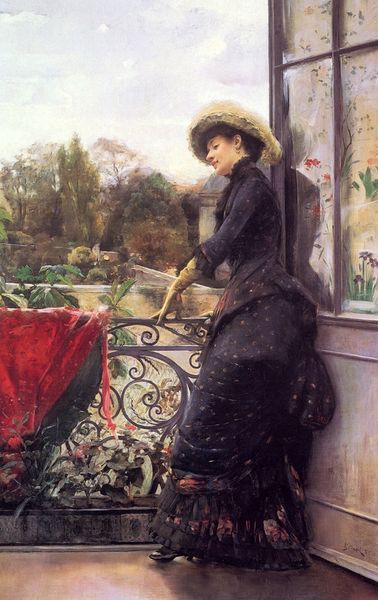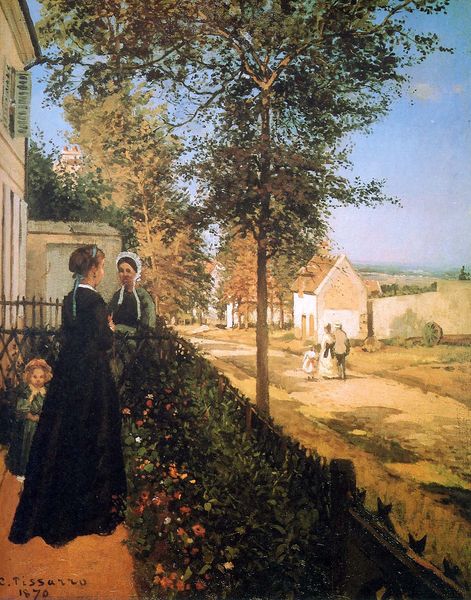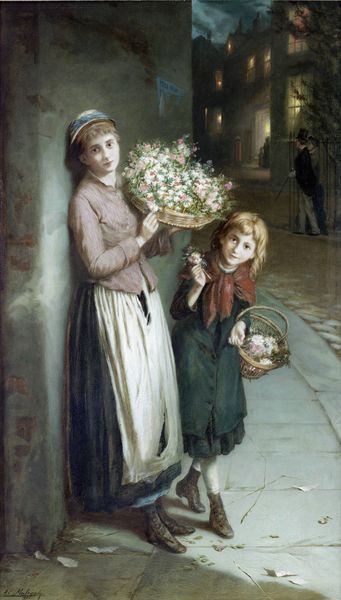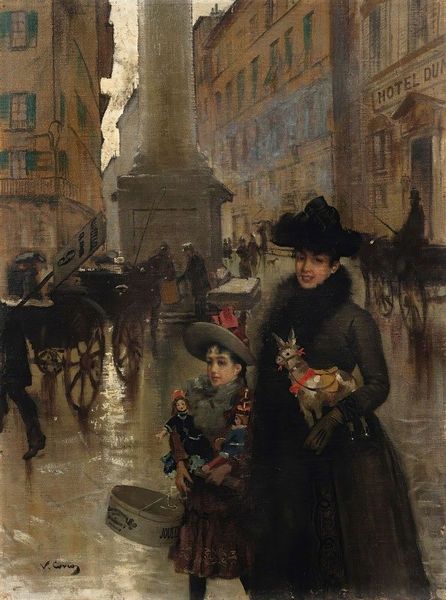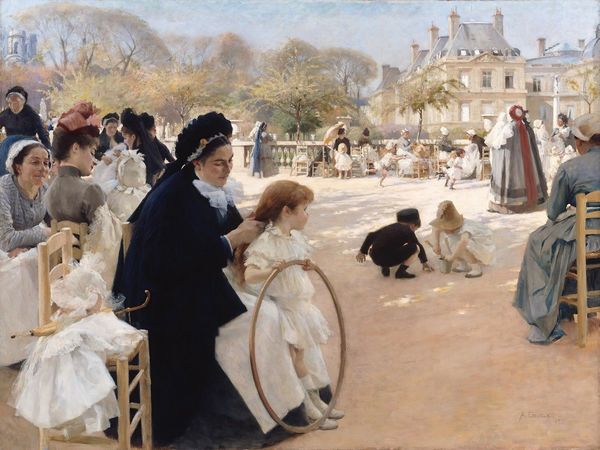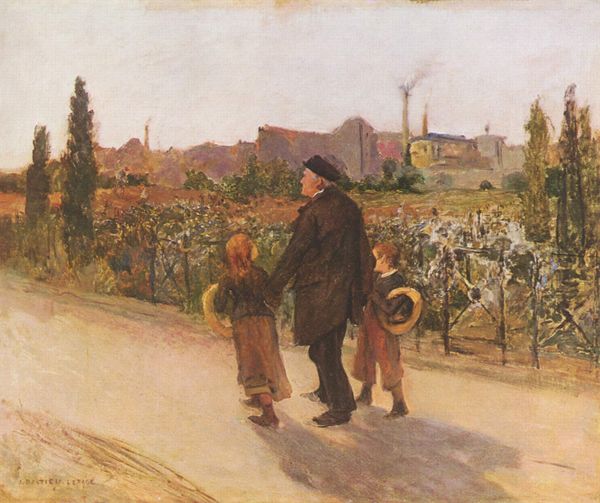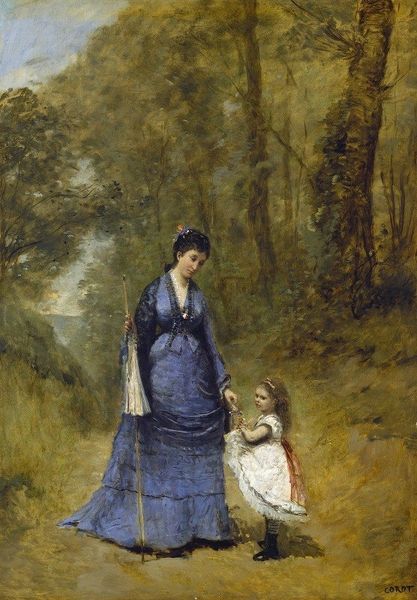
painting, plein-air, oil-paint
#
portrait
#
painting
#
impressionism
#
plein-air
#
oil-paint
#
landscape
#
oil painting
#
cityscape
#
watercolor
Copyright: Public domain
Editor: This is Berthe Morisot’s "Woman and Child on the Balcony," painted in 1872 with oils. It’s currently here at the Art Institute of Chicago. I'm struck by the somewhat melancholic feel of the mother in her dark dress overlooking the light-filled cityscape with her child. What cultural symbols or themes resonate with you when you view this work? Curator: The balcony itself is a powerful symbol. In art, balconies often represent a threshold, a space between the domestic interior and the public world. Notice how Morisot positions the woman on this threshold. Dressed in black, she embodies mourning but the picture could also hint to societal constraints on women of that era. The dome is evocative, isn’t it? Editor: Absolutely. It suggests power, religion, perhaps even aspiration? Curator: Indeed. Consider that in the 19th century, women artists were breaking into a male-dominated world. Is Morisot suggesting a yearning to participate more fully in that “dome” world? Is the daughter, in her bright dress, perhaps the future breaking away from the grief and constraints that the mother internalizes? Or are they contemplating France after the Franco-Prussian war? How do these symbols collectively inform our understanding of female identity and social mobility? Editor: I see how those contrasts—dark and light, enclosure and openness—emphasize a kind of tension and longing that encapsulates a feeling of transition, perhaps. Curator: Precisely! The beauty is in how Morisot layers those feelings with visual cues that leave the narrative somewhat open. Now that we've examined those symbols, how has your perspective of the painting evolved? Editor: Thinking about the cultural weight, it gives so much more depth. I now see that Morisot used relatable symbols to open conversations on France, women, and even moving forward. Thanks for helping me see all those interesting layers. Curator: It's in those layered readings that artworks truly resonate across time. Thanks for the enriching perspective you brought to this analysis, too.
Comments
No comments
Be the first to comment and join the conversation on the ultimate creative platform.

